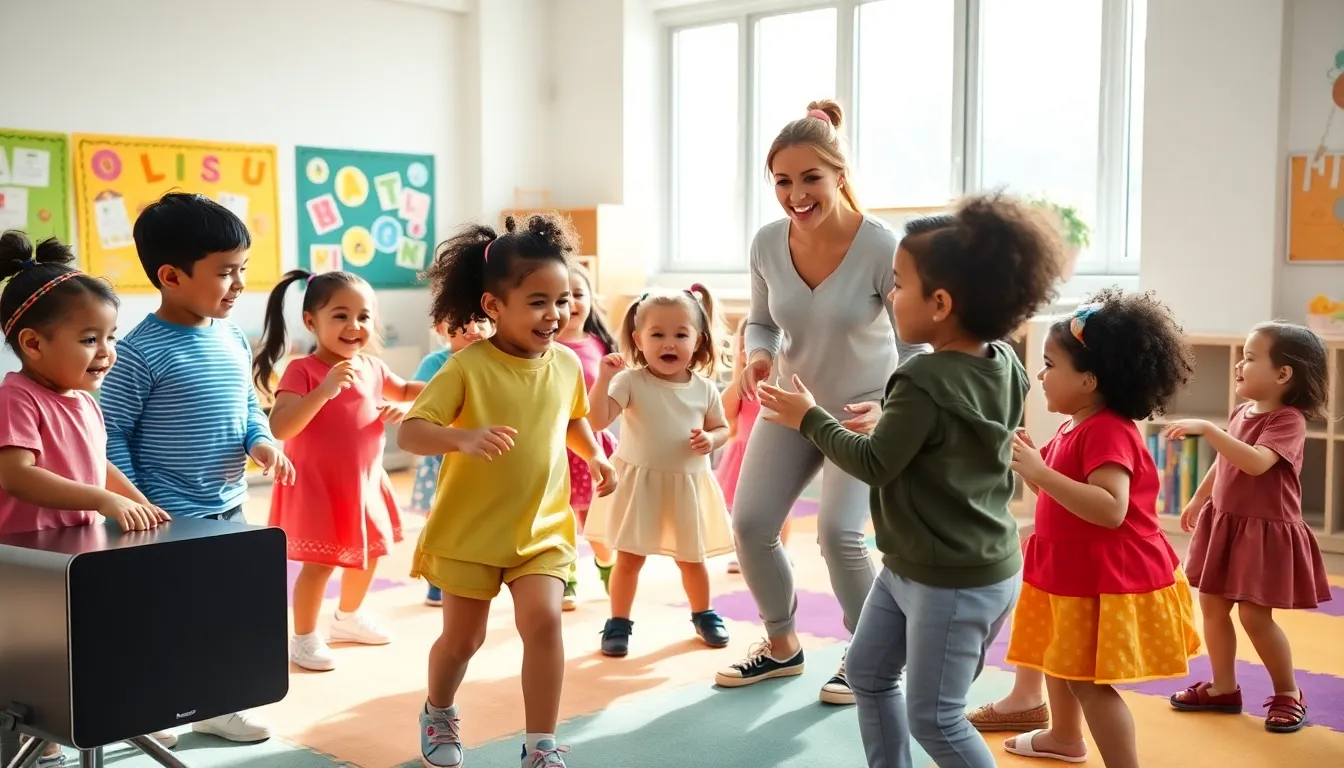Imagine a room full of giggles, shrieks, and the delightful sounds of small feet tapping to a beat. When it comes to preschoolers, music and movement aren’t just play: they’re vital to development. Engaging children this way tickles their brains, strengthens their bodies, and boosts their imaginations. So, if you’re wondering how to turn your living room into a mini concert and dance party, buckle up. We’re diving into the wonderful world of music and movement activities that pack a punch in preschool development, all while keeping the fun flowing.
Table of Contents
ToggleThe Importance Of Music And Movement In Early Childhood

Benefits For Cognitive Development
Music is much more than simply enjoyable noise. For preschoolers, it’s an integral part of cognitive growth. Studies have shown that active engagement with music can enhance memory, improve focus, and even boost language skills. When children sing along to songs or follow along with rhythms, they’re not just having fun: they’re exercising their brains, strengthening neural connections, and creating a solid foundation for future learning.
Physical Development Through Movement
Movement activities encourage physical growth in significant ways. As children dance, hop, or just wiggle, they enhance their motor skills and coordination. This physical engagement builds strength and balance. Whether they’re balancing on one foot or twirling in circles, kids are honing their muscles and learning how to control their bodies. Plus, let’s not forget the extra energy release, happy kids lead to happy parents.
Emotional Benefits Of Music And Movement
Emotional health is just as crucial, and music has a unique capacity to connect with feelings. Singing and dancing enable preschoolers to express emotions, helping them to identify and manage them better. When they feel joyful, they can dance it out: when they’re a bit down, a comforting song can lift their spirits. Also, engaging with music can foster empathy, as children learn about different cultures and emotions through songs.
Fun Music And Movement Activities To Try
Action Songs And Rhymes
One fantastic way to engage preschoolers is through action songs and rhymes. Think of classics like “Head, Shoulders, Knees, and Toes.” These songs get kids moving while they sing, and it’s a riot to see them try to keep up with the actions. It’s not just fun: it reinforces body awareness and enhances vocabulary.
Instrument Exploration
Bring out those pots, pans, and the good ol’ wooden spoons. Instrument exploration can awaken creativity in little ones. Providing a variety of instruments allows children to experience different sounds and rhythms. As they bang, shake, or blow, they learn about volume, pitch, and rhythm all while developing their fine motor skills.
Dance Parties: Creating A Movable Space
Who doesn’t love a little boogie? Dance parties are not only enjoyable but also critical for social interaction. Set up a movable space where kids can flail their arms about and dance freely. Throw in a variety of music genres, from jazz to pop, and encourage them to express themselves. They can even learn new dance moves, which improves coordination and gets them comfortable in their bodies.
Creative Movement Activities
Get those imaginations flowing. Creative movement activities allow children to interpret music through their movements, becoming little storytellers. For instance, adults can play a song and ask them to act out how it makes them feel. They can jump like a frog or slither like a snake. This type of free expression fosters creativity and imaginative play.
Incorporating Music Into Daily Routines
Transition Times With Music
What better transitions than with some catchy tunes? Music can act as a signal for various transition times throughout the day, be it snack time or cleanup duty. By playing a specific song during transitions, children begin to associate that melody with a specific activity. This makes for smoother transitions and adds a splash of fun.
Using Music For Relaxation And Mindfulness
With all that energy, kids sometimes need a little downtime, and music can be the key. Soft, calming melodies can serve as the perfect backdrop for relaxation. Incorporate music into quiet time or reading sessions to help children unwind. This practice not only promotes mindfulness but also helps them learn to manage their emotions effectively.
Guidelines For Effective Music And Movement Activities
Engagement Techniques
To keep preschoolers engaged, variety is essential. Rotate songs and activities regularly to maintain interest. Use props like scarves, hula hoops, or even animal masks to add a visual element to movement activities. Involve children in choosing music: this gives them ownership and makes them more excited to participate.
Safety Considerations
Every fun activity comes with the need for safety. Ensure the space is clear of obstacles to prevent mishaps. When using instruments or props, supervise children to avoid any risks. It’s also wise to choose music that is age-appropriate. Watch for signs of overstimulation: if kids seem overwhelmed, it’s perfectly fine to dial back the activity.


